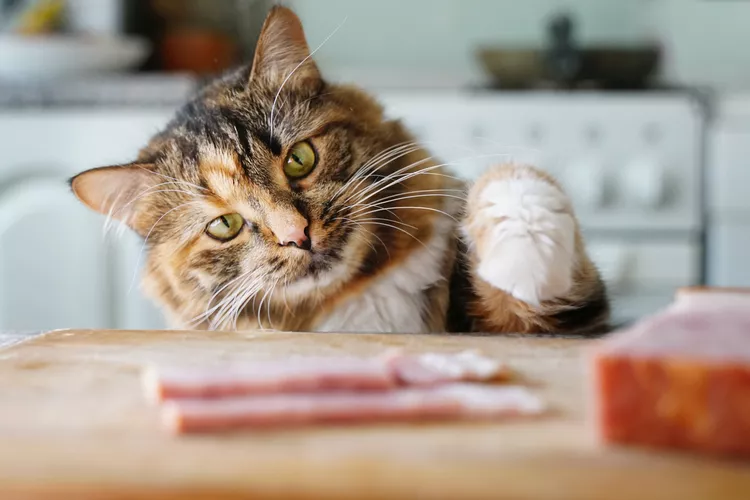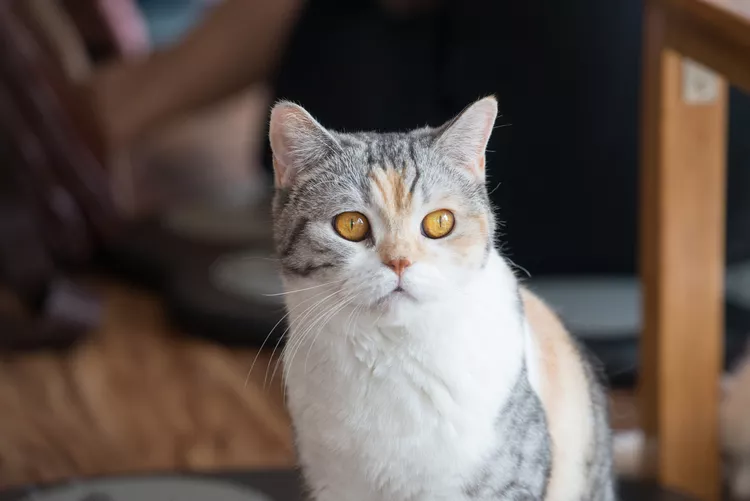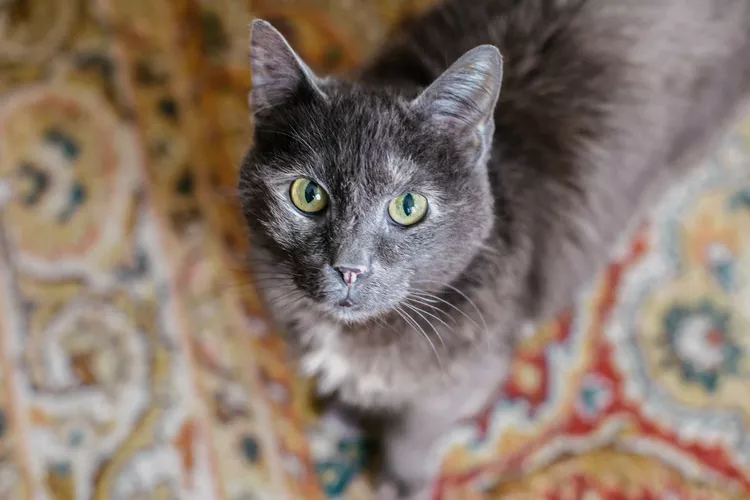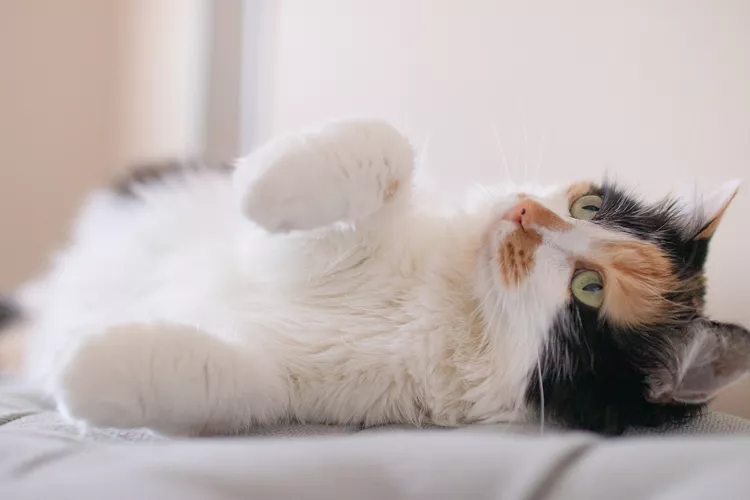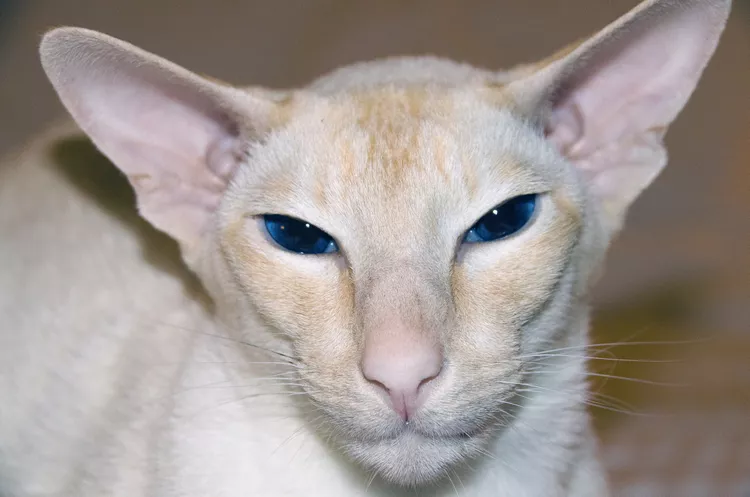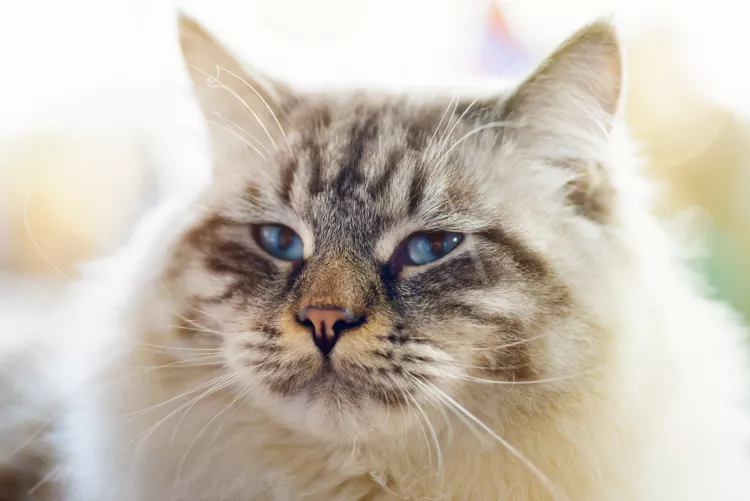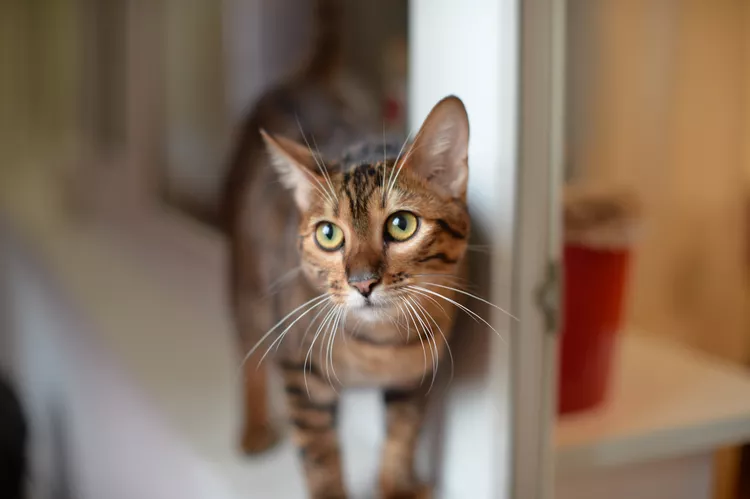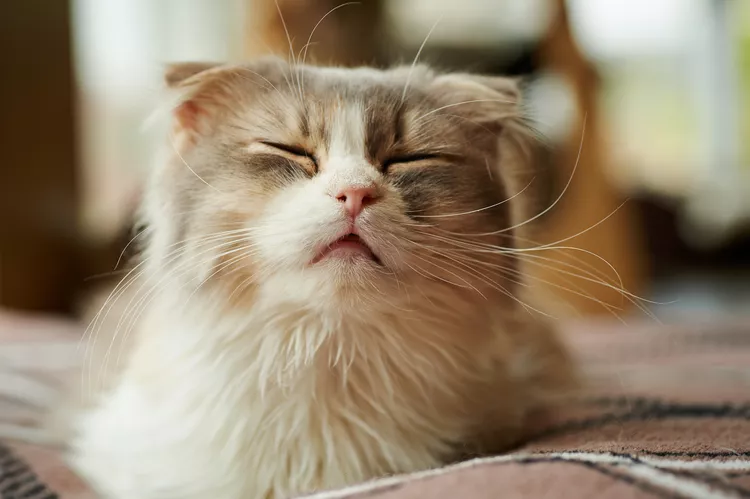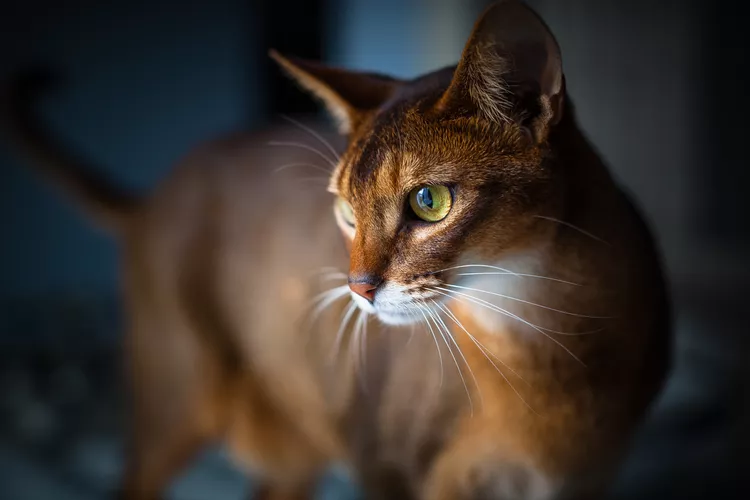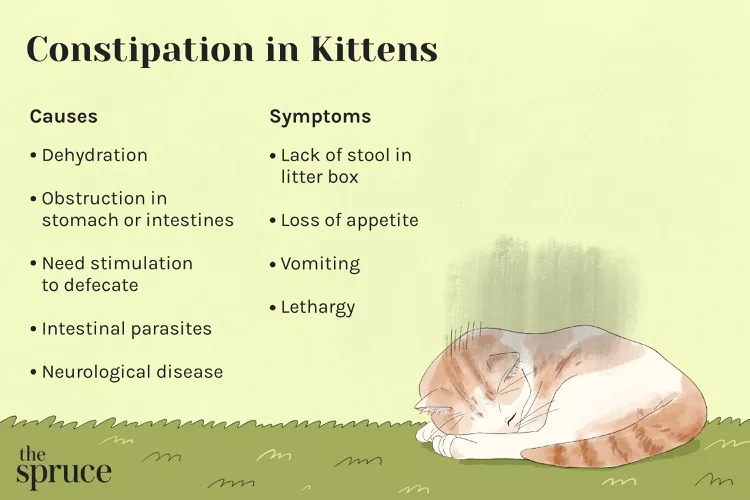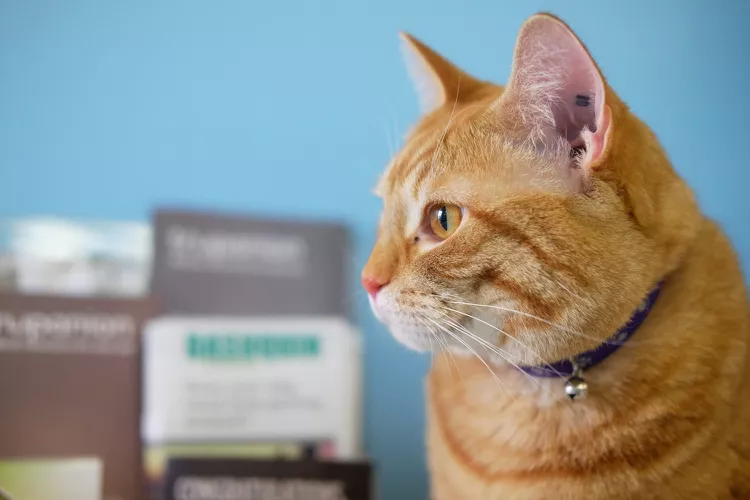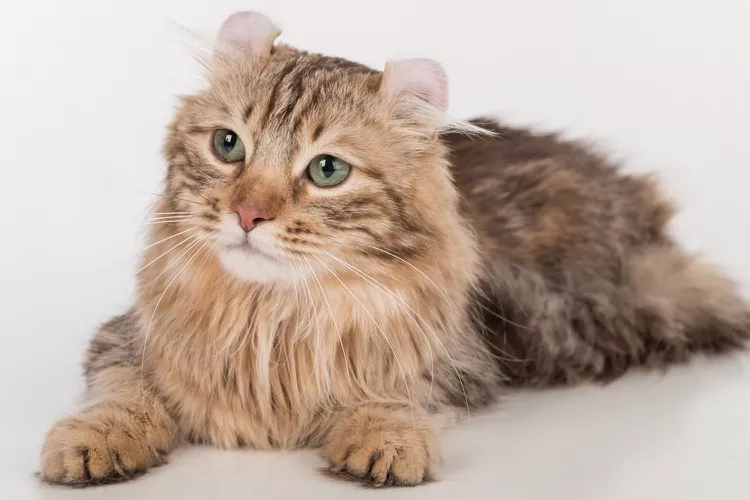
Thanks to their fluffy, curled-back ears, American Curls are one of the most easily identifiable cat breeds today. As their coats can come in a wide variety of colors and patterns, and their hair can be either short or long, it's the unique ears of American Curls that make them stand out among other cat breeds. Today, their backwards-curled ears are a desirable trait among breeders, but they were originally the product of a natural (and harmless) genetic mutation first identified in the United States during the 1980s.
But it's not only their curled ears that make these cats so special. Sometimes nicknamed the "Peter Pan cat," these felines retain kitten-like natures into adulthood, and love to play, investigate, climb, and keep a close eye on their owners. They are very affectionate and easily accept children and other pets, making them an ideal family cat.
Breed Overview
Personality: Playful, friendly, affectionate, inquisitive, and easy going
Weight: Males weigh between 7 and 10 pounds, while females weigh less than 8 pounds.
Length: 18 to 20 inches
Coat Length: Short haired or long haired
Coat Colors: Any possible feline color, including black, white, gray, brown, cream, or red
Coat Patterns: Any possible feline pattern, including solid, bi-color, tabby, tortoiseshell, tuxedo, and calico
Eye Color: Any possible feline color, including amber, aqua, blue, copper, green, gold, hazel, odd-eyed, orange, yellow
Life expectancy: Typically 10 to 18 years
Hypoallergenic: No
Origin: United States
American Curl Characteristics
American Curls are friendly, affectionate, and active cats that are often said to have a somewhat "doglike" attachment to their owners. They like to gently poke and prod their humans with their paws and will often follow their favorite family members from room to room around the house. They are exceptionally intelligent cats as well. Some have been known to figure out how to flick light switches on and off, and many learn how to open and close doors and cupboards.
They typically retain a kitten-like playfulness throughout their entire lives and love to play with toys, climb and explore furniture and cat trees, investigate anything new brought into the home, and even play fetch. However, once playtime is over, your American Curl is likely to cuddle up on your lap, give you some affectionate head bumps, and spend some time in peaceful companionship.
It's important to note, however, that American Curls don't like to be left alone for too long—so you might have to consider whether your schedule can accommodate several hours of attention and playtime each day.
These friendly felines aren't too large when fully grown, although they are somewhat muscular for their small-to-medium size. They generally reach maturity by one to two years of age. American Curls aren't especially talkative cats, tending towards quiet trills rather than loud meows. A sociable cat, most American Curls take readily to children and other pets in the home, especially if they offer extra opportunities for play and fun.
History of the American Curl
Despite their popularity, American Curls don't have a long history as a distinct breed. In fact, the first American Curl litter was born only a few decades ago in Southern California.
In 1981, founding breeders Joe and Grace Ruga adopted a stray, long-haired black kitten with the Curl's distinctive ears and named her Shulamith. Only a few months later, Shulamith gave birth to a litter of kittens, half of which had the same curled ears. By 1983, cat breeders were working hard to selectively breed cats to preserve and propagate this unique characteristic. Fortunately, genetics were on their side: A feline geneticist named Roy Robinson found that the ear-curling gene was a dominant trait, so cats with only one copy of the gene would be born with curled ears.
The American Curl became incredibly popular over a short period of time, and was quickly recognized by the International Cat Association in 1987 and by the Cat Fanciers' Association in 1993. Today, American Curls are ranked 27th among the United States' most popular cat breeds.
American Curl Care
The frequency with which you groom your American Curl depends on its coat length. If your American Curl is short-haired, you can expect to groom its coat with a brush or comb once or twice weekly in order to keep it healthy and shiny. If your American Curl is long-haired, grooming should be increased to two or three times weekly, in order to remove any tangles, mats, or debris from the coat before it becomes a problem. Use a brush specifically designed for long-haired cats to avoid breaking or damaging the fur.
Like most cats, the American Curl is susceptible to ear issues, including ear mites. Be sure to check your Curl's ears weekly, and gently remove any dirt or debris with a dampened cloth or cotton round. Avoid using cotton swabs, as they can cause severe damage to your Curl's delicate inner-ear structures. If your Curl's ears are very dirty, red, inflamed, or smell funny, make an appointment with your vet as soon as possible. These symptoms may indicate infection or injury.
Regular dental hygiene can help protect your Curl from periodontal disease, so aim to brush its teeth several times per week. Daily brushing is ideal, but regular maintenance can support proper dental health. You can supplement brushing with plaque-removing treats, but give them to your Curl in moderation—they're packed with additional calories and are meant only to support a regular dental hygiene routine.
The American Curl is intelligent and needs adequate exercise, so choose games that will challenge its mental and physical abilities. Try puzzles designed specifically for cats or games like hide and seek. Many Curls are also happy to play fetch with a small toy or rolled up piece of paper. The American Curl requires several hours of attention each day, so it's important to make sure your family's schedule can accommodate proper playtime before bringing a Curl into the home.
Common Health Problems
American Curls are generally healthy and aren't predisposed to any specific genetic disorders. But as with any cat, the possibility always exists for your feline to develop some type of disease or condition during its lifetime.
Due to the unique shape of the American Curl's ears, some may be born with narrowed ear canals. These narrowed canals can trap wax, which can lead to ongoing ear infections. The opposite can also occur, where chronic ear infections lead to inflamed, narrow ear canals. Be sure to examine your Curl's ears every week to prevent or identify any ear or inner-ear issues. If you're concerned about the health of your Curl's ears, call your veterinarian for advice.
Appearance
Surprisingly, American Curls are not born with their most distinctive feature. Kittens are born with typical straight ears. However, within the first couple of days, the ears roll up into tight little buds. At around six weeks of age, the kitten's ears slowly begin to unfurl, reaching full curvature by the time the kitten is four months old. The breed standards call for an ear curl that is between 90 and 180 degrees at full maturity.
American Curls are not especially large cats, with males being no more than 10 pounds and females less than 8 pounds as adults. They are a moderately muscled cat with a well-proportioned body. The coat can be long-haired or short-haired, but either way, there is not much undercoat, meaning these cats don't shed as much as some other breeds. However, they are not hypoallergenic.
When it comes to color, anything goes. American Curls can be any color or coat pattern that occurs naturally in felines. That means your cat can be calico, solid black, red tabby, "tuxedo," solid gray, tortoiseshell, or any other combination of colors and patterns. The same is true of eye color; if it occurs naturally in felines, it is acceptable in an American Curl.
The skin on an American Curl's nose and paw pads should complement the color of its fur, but there is no one required color.
Diet and Nutrition
Like all cats, the American Curl may be susceptible to obesity or heart disease if it isn't properly exercised and fed a high-quality, high-protein diet. The amount of food your Curl eats each day depends largely on its age and activity levels, but talk to your vet if you're not sure how much you should feed your cat. Remember to give your Curl treats in moderation.
As a general rule, adult cats can eat two meals per day, while kittens should eat three or four smaller meals daily. All pet cats should have access to clean water at all times.
Where to Adopt or Buy an American Curl
Because American Curls are popular purebred cats, you aren't likely to find one in a local rescue or shelter, although if you are persistent in your search, you might find an owner looking to re-home a cat that they are no longer able to keep.
More likely, you will need to purchase an American Curl from a breeder. Breeders sometimes will sell "pet quality" cats for a lower price, while cats that are likely to excel in the show ring can command a far heftier price. You can find breeders at cat shows, or contact an American Curl breeder directly.
American Curl Overview
The American Curl is a unique cat with ears that curl towards the back of its head. This gives the cat a whimsical, alert appearance, which in fact reflects the typical personality of the breed. These felines are very intelligent, playful, and curious, and they form strong attachments to their owners. Many will follow their favorite people around the house, looking for attention, a treat, or a bit of play or mischief.
American Curls can be short-haired or long-haired, and their fur can be any color or pattern. These small-to-medium sized cats get along with with children, other cats, and most dogs, but as with any pet, make introductions slowly and carefully.
Affectionate and intelligent
Good with other pets and children
Not a heavy shedder
Susceptible to ear infections
Requires regular engagement
Doesn't like being left alone for lengthy stretches of time
More Cat Breeds and Further Research
Before adding an American Curl to your family, it's important to do your research. The American Curl is a fairly low-maintenance cat, but does require adequate exercise and engagement throughout the day. They can also be susceptible to ear infections and wax build-up, so routine ear examinations are necessary.
If you want to learn about other cat breeds with unique characteristics, be sure to check out:
Otherwise, check out all of our other cat breed profiles.
-
Are American Curl cats expensive?
As with any purebred cat, you'll pay much more for an American Curl than for a mixed-breed cat from the local shelter or rescue. Show-quality American Curls can cost well over $1,000, although purebreds that don't quite meet the breed standards may sell for less.
-
Are American Curl cats hypoallergenic?
While they don't shed excessively, the American Curl is not a hypoallergenic breed of cat.
-
Do American Curl cats like being held?
The American Curl is a very affectionate breed, and enjoys spending quality time cuddling and interacting with its humans. But all cats are individuals, and some enjoy being held more than others. It can help if you regularly and gently pick up and hold your cat starting when it is a young kitten. Never continue to hold onto a cat that is showing obvious signs of wanting to go, such as wiggling, struggling, or biting.

